From accidentally misprinted dates on invitations to wrongly heard rumors, we are all constantly in a battle searching for the truth. In our current world of hyper-interactivity and our acute obsession with creating content, the way we interpret and understand the events happening in our community and around the world are now more digitized than ever. People can share their thoughts with millions of people with one click of a button. Naturally, when social media serves as such a large outlet meant to connect and share helpful content, there are always going to be those who wish to abuse the systems that we have built and spread misinformation. Lies might be harmless on a smaller scale, but they can also be lethal on larger ones, and technology’s newfound chokehold on our lives has allowed misinformation and fake news to spread like a contagion, making it harder than ever to find actual, truthful content. There is no greater host of these diseases than on social media platforms.
While the amount of fake news and misinformation we digest certainly has spiked in recent years, they have been a facet of our lives long before social media was conceived, back when the world was firmly planted in the domain of newspaper and print media. “Clickbait journalism” has been around since printed newspapers were the standard. Using catchy headlines or hoaxes has become a common, effective marketing practice to attract clicks and increase views. On the opposite end of the spectrum, journalism teacher Lindsey Katz and her students practice altruistic principles regarding the creation of news, such as ensuring the credibility of sites used for research and doing their part to avoid bias in the news.
“A lot of what we do in journalism is creating [truthful media]. Where are we getting our research for our articles? Are we fact checking? Are we making sure, as journalists, that we remove bias from our pieces when [it] isn’t appropriate?” Katz said.
Print media might have marked the beginning of an epidemic of misinformation, but social media undoubtedly marks its growing presence on the world stage. In recent years, one of the greatest online sources of biased or even completely falsified information is QAnon, a radicalist-right web of conspiracy theories that created serious allegations against the United States government, COVID-19 and more. Belief in QAnon spiked in 2020 ahead of the presidential election, backed by the support of Donald Trump. It was in part responsible for the insurrection at the U.S. Capitol on Jan. 6, 2021, just one example of the serious consequences that misinformation can harbor.
Social media being a breeding ground for misinformation really isn’t a big surprise given that it’s baked into Big Tech’s core ideologies. The goal of all social media platforms, hidden within the trapdoor-filled labyrinth that is their terms and conditions and roped in their complex web of algorithms, has always been to make users feel as if they are in control. The illusion of user power is central to the ideologies of all social media platforms and it’s what allows them to influence your decision-making, beliefs and personal principles.
Contrary to their untruthful, albeit convincing, façade of idyllic communities where everyone supposedly gets along and you have control of what you do, every single aspect of your experience on social media platforms is highly monitored and recorded: what you like, comment on and even how long you look at a post. Then, their algorithm takes all this data, crunches the numbers, and spits out another post for you to look at. Then the cycle repeats again. And again. And again.
The danger of this system, and simultaneously the reason why social media platforms have such a hold on us, is because they quite literally can stay “on” forever. As long as their almighty algorithm functions, they can continue recommending you content, targeted ads and anything else that they desire. The worst part is that, in the midst of all of this, many users still believe that they are in control of what they see and interact with. And unfortunately, they are mistaken. Try as they might — try as we might — but the invisible hand behind the screen that dictates all has all the power. Our relationship with social media is parasitic, and we’re on the receiving end. Our relationship with social media is parasitic, and we’re on the receiving end.
“The algorithms make it really difficult to find sources from multiple perspectives because they’re always trying to figure out what your biases are; they’re trying to sell you the news. If you’re not consistently searching for multiple perspectives, you’re not going to get multiple perspectives,” history teacher Kevin Doherty said. “I think because media is so global, it’s nearly impossible for a media enterprise to not have marketing as their number one priority. It’s not necessarily good or bad. It’s just the reality of our global world.”
While biased media content might be the backbone of social media’s role in the spread of misinformation, they have other strategies they use to augment it as much as possible. One of these strategies is the use of community — a hallmark of social media that companies are loud and proud about. Of course, united communities have benefits like connecting with those who share similar beliefs as you. However, it also has cons, because those people are the only people you are exposed to. Even the pros have cons in the sense that the people who you talk to might share more radicalized versions of your beliefs, or want to bring down or hurt others.
So begins the concept of the echo chamber, a state of content-wise practical purgatory. In an echo chamber, everything and everyone that you are exposed to on social media only aligns with your personal beliefs as determined by the abstruse algorithm, effectively reducing your ability to form complete opinions on your own accord and omitting large debates that might make you question your own principles. Prolonged exposure to only one view or belief shelters you from a rounded perspective and pushes your beliefs further to one extreme. The hard-to-swallow truth is that there is no escaping bias on social platforms and in the media as a whole because it is inconceivable for news to be written completely without it. Most major news outlets occupy some place on the political spectrum, their beliefs ranging from intensely conservative to equally progressive.
Not to mention that these same news outlets are subject to media consolidation — the process of concentrating ownership of our news to the hands of only a few corporations — influencing the information that goes down the chain to the masses. This affects their coverage of certain topics and their coverage, meaning that if a user is only exposed to news sources that are solely conservative or solely progressive, it shifts their personal views to one end of the spectrum, whether they are conscious of it or not.
Extending this idea to social media outlets, their highly personalized experiences that are supposed to be what draws users in actually make them much more susceptible to biased media consumption than traditional news outlets. These ideas have been discussed in documentaries like “The Social Dilemma,” which studies the effect of social media on how we perceive ourselves and the world around us through the use of expert interviews and a compelling fictional storyline.
Beyond omitted perspectives and changing personal principles, echo chambers practically welcome misinformation with open arms. One single falsified post or a casual joke made in passing can be sent around an echo chamber and amplified with every repost. This creates a media firestorm — more people posting more content that gets reposted elsewhere — similar to the way that the algorithms powering these platforms can keep recommending content infinitely, they can also give special attention and more traction to posts that garner a lot of interaction from users, also known as going viral.
Viral posts can create viral trends, encouraging more people to make similar content in an attempt to get their five seconds of fame at the mercy of an algorithm that they know nothing about. It’s a helpless rat race where everyone has to fight for a short period of attention. Social media content creators know that in the cacophony of content, it’s hard to get their posts interaction like likes, comments or reposts from users. In an effort to feel original and creative, many accounts often have to resort to the creation of falsified or exaggerated content. They often use tactics such as fear-mongering, which is the conception and distribution of exaggerated or sometimes even completely falsified news to instill a sense of fear or danger in a viewer.
However, it’s not reasonable to blame all problems involving misinformation on social media, because they aren’t totally at fault here. A lot of what makes fake news such a big issue in our world is because of our mental laziness. In psychology, dual process theory explains that when it comes to decision-making, there are two distinct processes occurring in our brains: a slower, more intentional and reason-based route and an efficient, unconscious and automatic response. Our brains, having to constantly make decisions about what deserves our attention, most often prefer the latter process since it requires the least amount of effort. In our mind, the effort of having to decide whether or not one singular post, tweet, or thread is truthful within hours and hours of scrolling is simply not worth it.
All of this is to say that misinformation has grown to be an immense and concerning problem in our current world. However, there might be light on the edge of the horizon. For example, social media giant Meta — owner of Facebook and Instagram, has implemented fake news tracking — so users can flag posts as being falsified and they will stop being shown on users’ feeds. X/Twitter has also followed suit. While it’s great that social media companies are taking responsibility and finally acknowledging the deceit that goes on under their watch, it’s also up to us, the audience, to take back control of the news that we digest.
“As the consumer, you just have to take responsibility for yourself and try to find those different sources. Our students here at West and their peers around the world are so much more equipped to do that,” Doherty said. “So I’m encouraged by how well my students can navigate different media sources and sift through claims and try to find truth in multiple different perspectives.”Improving media literacy is crucial to understanding when news’ intent is to inform, persuade or deceive. Think critically about what you see online, and control your snap judgments by taking a look at the deeper meanings behind it. Manage your time on social media wisely and report content that you think is trying to purposefully mislead. This list is by no means exhaustive, but the journey to ridding the world of misinformation is long and complicated. The first steps we must take are small. Regain control over your news, and we’re one step closer to ending the search for truth.

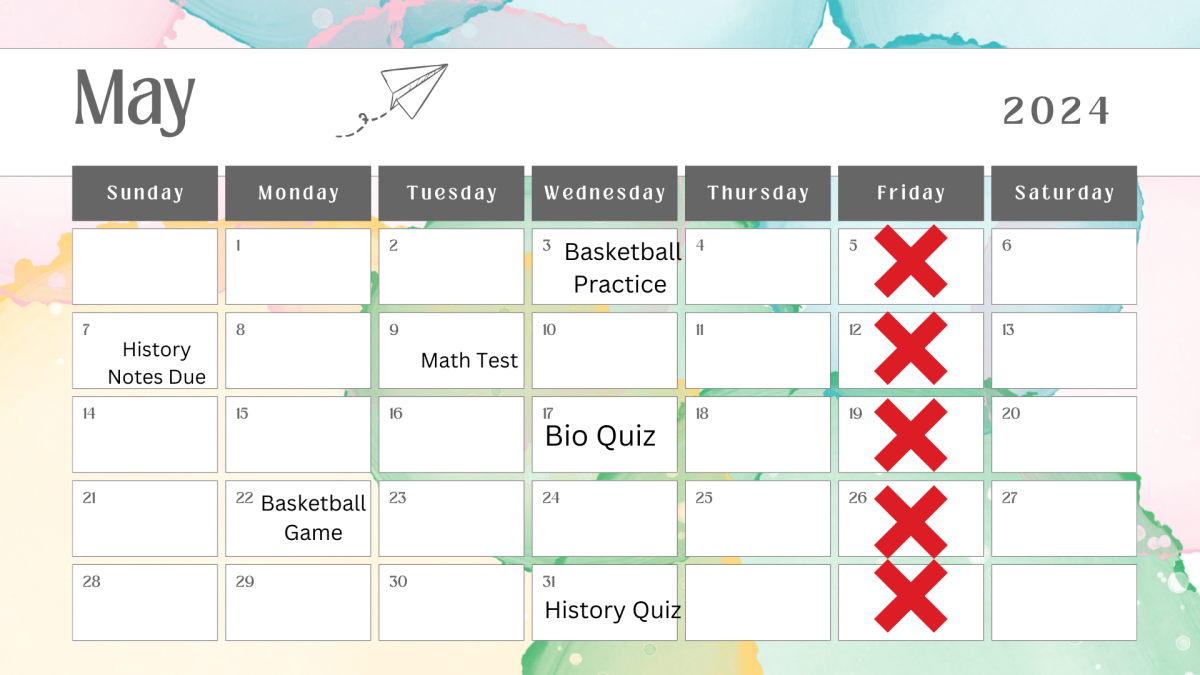
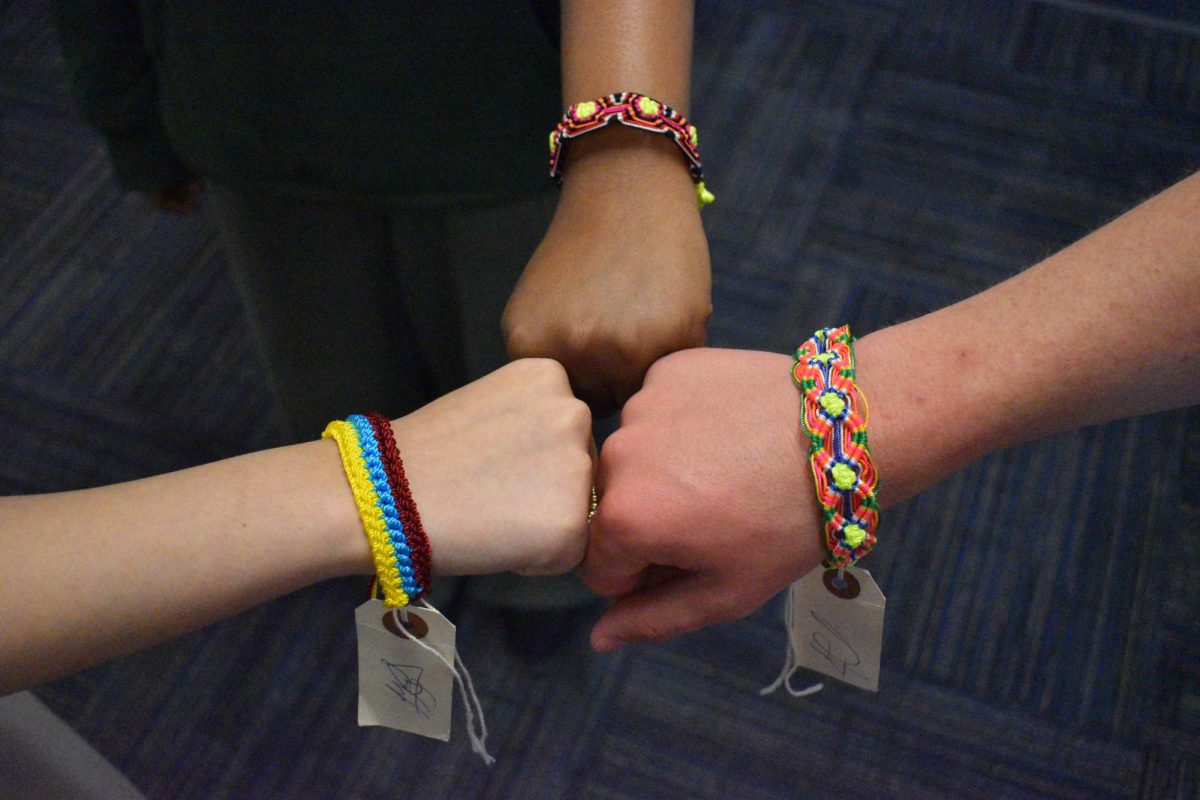



![Latin students pose for a group photo in front of historical ruins in Italy. From March 13 to March 23, the Latin department traversed cities in Italy to immerse students in an educational experience of a lifetime. “I enjoyed being able to learn about the different cultures. [The trip] encouraged me to see other peoples lifestyle and learn more about different histories,” senior Suraiya Saroar said.](https://pwestpathfinder.com/wp-content/uploads/2024/04/PXL_20240318_092633493.jpg)
![From Jan. 22 through Feb. 1, Parkway West High is displaying a wide array of art pieces made by students ranging from elementary to high school. All classes were represented on the displays in both the art wing and the main foyer of the school. “[Art] benefits me because in the middle of a busy day. I can just relax and have some fun doing art and it makes me happy. I think its important that you show art in the art show so that people can get inspired by it and be inspired to create their own pieces; it’s really impactful,” sophomore Dhiya Prasanna said.](https://pwestpathfinder.com/wp-content/uploads/2024/02/image1-1200x800.jpg)





![Moviegoers smile for a picture after watching the Bollywood movie “3 Idiots.” The event ran from 4-8 p.m. on Saturday, March 9 and was open to students across the Parkway School District. “I decided to come to the movie night because I wanted to introduce my non-Indian friends to the rich culture and entertainment of Bollywood. One of my favorite parts [of the night] was the combination of [the] amazing food and the pure comedic entertainment. [It] was unmatched,” sophomore Aryan Allu said.](https://pwestpathfinder.com/wp-content/uploads/2024/03/IMG_5479-e1710180016483-1200x900.jpg)
![Senior Kylie Secrest volunteers at the blood drive signup table.The table provided students aged 16 and up with information about the drive and assisted them in the signup process. “We decorated the stand in the lunchroom with heart related or red decorations from either Dollar Tree or Five Below,” Secrest said. “This year was my first year doing [the blood drive] and it was fun. I got to be able to meet new people and help out the community.”](https://pwestpathfinder.com/wp-content/uploads/2024/03/image2-1200x800.jpg)


![Smiling widely, Principal John McCabe congratulates English teacher and English Department head Shannan Cremeens on winning the 2023-2024 Teacher of the Year title. Sophomore Cooper Oswald was a witness to the celebration. “We were all pretty excited. We were all clapping and standing up. We even [got to] take a picture with her,” Oswald said.](https://pwestpathfinder.com/wp-content/uploads/2023/12/TOYvertical-1200x954.png)
![Standing in front of the American Sign Language program’s mural, junior Brooke Hoenecke signs with freshman Darren Young. Hoenecke began cadet teaching for ASL this year alongside working towards earning her seal of biliteracy. “I was in ASL class when I received the email [that I qualified for the seal]. I was jumping up and down with my teacher and the rest of the class. One of the reasons why I took cadet teaching this year was so that I could prepare for the Seal of Biliteracy and be immersed in ASL,” Hoenecke said.](https://pwestpathfinder.com/wp-content/uploads/2024/05/hoenecke.jpeg)
![With a keen eye for detail, senior Natalie Lashly writes her signature onto the senior hand wall. After some encouragement from her friends, Lashly applied to make the hand wall with her Lorax-inspired design. I thought the [bright] colors would be fun. Our quote on the wall is Let us grow,’ based on the Let it grow song [from the movie]. [I was hoping that the design would] make the cafeteria feel more exciting, Lashly said.](https://pwestpathfinder.com/wp-content/uploads/2024/05/DSC_0099-1200x801.jpg)
![Walking onto the field, freshman Erastus Adewusi wears a pink jersey in remembrance of cancer awareness month. With the number seven on his jersey, Adewusi reflects on his life in Nigeria before moving to America. “I [used to wake up] at 5:30 a.m. and school would end at 5 p.m. [versus] now,” Adewusi said.](https://pwestpathfinder.com/wp-content/uploads/2024/05/DSC_0029-1200x800.jpg)
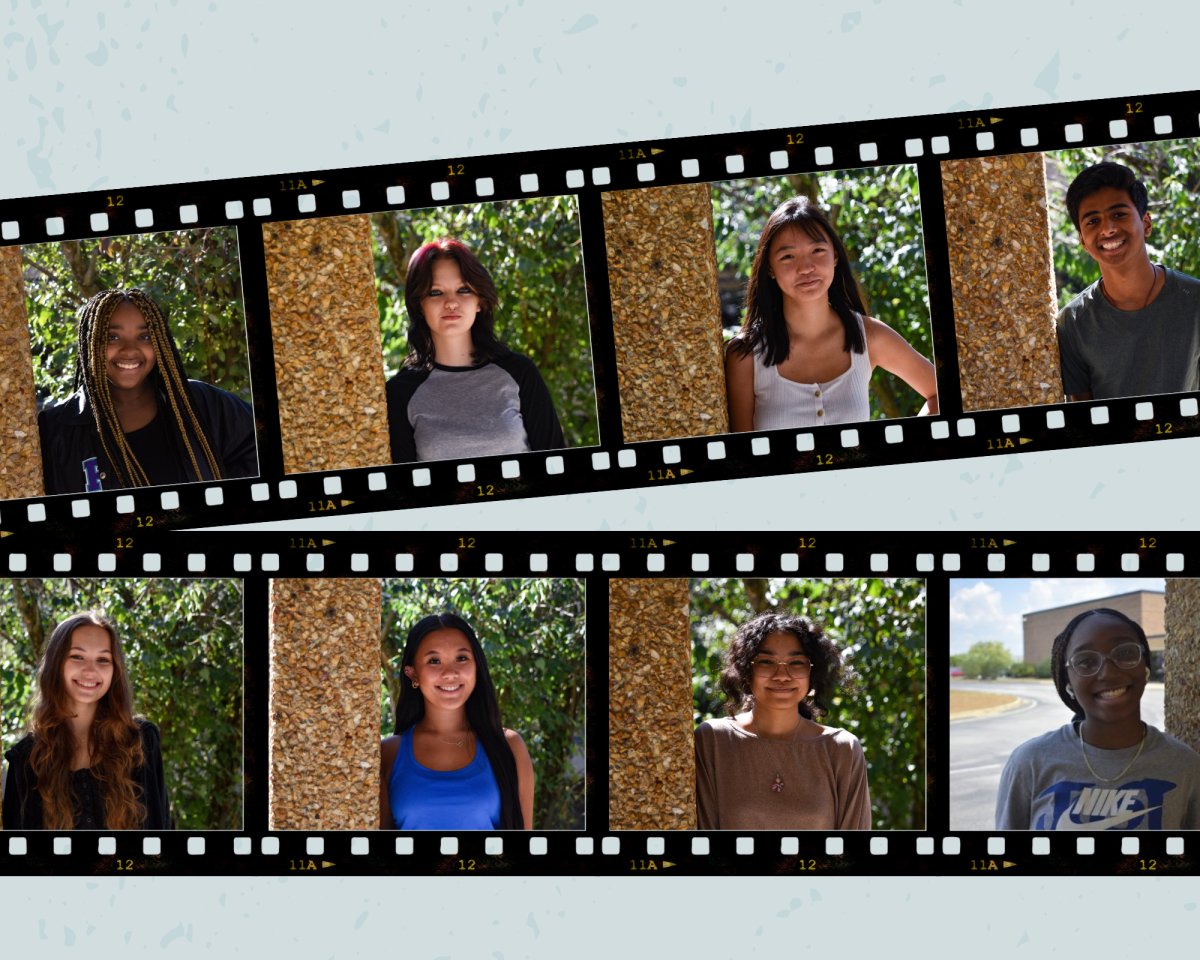
![Envisioning a cathedral in his mind, senior Soren Frederick puts pencil to paper and practices a rough sketch in the drawing room. Frederick grew up surrounded by a family of artists who helped him realize his passion for drawing and painting as he matured. “My family [is] very much [an inspiration] for drawing and painting. [Art] didn’t start [in the family] with me; it started with my mom and my older sister, and my older brother is very good at drawing [too],” Frederick said.](https://pwestpathfinder.com/wp-content/uploads/2024/05/DSC_0017-1200x800.jpg)
![Junior Amelia Geistler poses with her aunt, uncle and cousin. Moving through childhood, Geistler learned that having parents with a different appearance from her meant facing awkward, upsetting situations. “Something I faced [after] being adopted was that I was [treated] better when people discovered I had white parents. A childhood memory [is] when I went over to a friends house for the first time and her parents seemed to be very passive-aggressive, but when they learned I was adopted by white parents, they gave me equal treatment and ‘love’ as their white daughter,” Geistler said.](https://pwestpathfinder.com/wp-content/uploads/2024/04/Screenshot-2024-04-30-7.54.03-AM.png)
![Business and personal finance teacher Evan Stern stands in front of his classroom. After facing hardships growing up, Stern learned how to deal with them with the help of role models like his dad. “We dealt with some trauma when I was in middle school, and my dad had to be responsible for all three of us while he was working full-time. I know he had to sacrifice a lot. Im sure it was really hard for him, but looking back on it, he did a really good job . I didnt appreciate everything that he did at the time because I was so young. Now, Im engaged and probably going to have kids of my own in the next couple of years so I [am starting] to look at things differently,” Stern said.](https://pwestpathfinder.com/wp-content/uploads/2024/02/Untitled-7-1200x900.jpg)
![Holding his two smiling daughters in his arms, Principal John McCabe celebrates earning his doctorate degree. He attended Maryville University for two years and reached his goal of achieving a Doctor of Education: Educational Leadership degree after months upon months of hard work and long nights. “Im not going to lie, Im glad I have another night of my life back when Im not at school till very late,” McCabe said. “I can spend more time with my family and with my friends [who] are here at [West]. Im really happy about that.”](https://pwestpathfinder.com/wp-content/uploads/2024/01/mccabefeature.png)
![Art teacher Katy Mangrich sits in her classroom, smiling for a picture. During her time in high school, Mangrich learned several lessons that she now passes on to her son. “The biggest life lesson that I learned is honesty. I wouldnt say I was the best teenager, but I learned very quickly in high school to always be forthcoming and honest with my parents because it always ended up serving me better in the long run. [My parents] might have been upset with me [and the mistake I made], but I wasnt going down the rabbit hole of a lie because that was just going to get me into more trouble,” Mangrich said. “I passed [that lesson] along to my nephew. Honesty is always your best approach; just don’t lie. I say that to my son all the time. Theres no advantage to lying, [and] thats a huge takeaway [from] how my parents raised me.”](https://pwestpathfinder.com/wp-content/uploads/2024/01/Screenshot-2024-01-26-10.10.12-AM.png)
![Social studies teacher Aaron Bashirian smiles in front of his classroom. Bashirian didn’t know he wanted to be a teacher from early on, but he found the choice to be a good one. “I started [teaching] because there was an opportunity for me to experiment with it. Fortunately, [teaching] was a good choice. In 2012, I became a teacher at Parkway at the Alternative Discipline Center, which is where they send suspended kids to keep being educated if they choose. I spent six years there and then I got drafted to West, [where] Ive been for about six years,” Bashirian said.](https://pwestpathfinder.com/wp-content/uploads/2024/01/Untitled-35-1200x800.jpg)
![English teacher Angela Frye stands behind her desk in her classroom. Frye went through a lot of personal struggles to get to where she is today, and with each step in her life, she carries her gratitude for those obstacles. “Everything happens for a reason. I believe in [the concept of] good energy, good karma, [from] being a good person. Those are things I dont take lightly. [Struggles] build character. You really appreciate everything you have when you have to work for everything you have,” Frye said.](https://pwestpathfinder.com/wp-content/uploads/2023/11/Untitled-8-1200x800.jpg)
![English teacher Leslie Lindsey smiles for a photo behind her desk. Growing up, Lindsey participated in many things outdoors, learning life skills that she still uses today. “I loved fishing and was never grossed out by it. I could get my hands dirty and spend time outside; even when it was cold, I didnt care. Fishing takes a lot of patience, and that is [now] a virtue of mine because I have great patience that translates into my classroom,” Lindsey said.](https://pwestpathfinder.com/wp-content/uploads/2024/04/IMG_6632-1-e1712758336310-1200x983.jpeg)


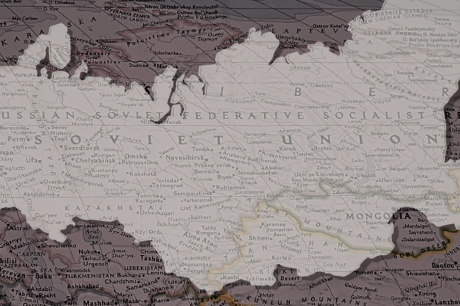

![Since the Supreme Court’s repeal of the federal law protecting a women’s fundamental right to abortion, many states have begun to restrict access to or even ban abortion. On June 24th, 2022, Missouri was one of many states to move to ban abortion. “Missouri is giving fetuses more rights than humans who’ve been on this world for many years. If someone [wants] to have an abortion because of whatever [reason], it should be their choice. You dont know why theyre in that position and you dont know why they need an abortion,” senior Mars Allendorph said.](https://pwestpathfinder.com/wp-content/uploads/2024/05/Bang-1.png)
![Company marketing for gifts and cards during Mother’s Day and Father’s Day depicts the differences associated with the holidays. In order to capitalize on profit, large companies often include stereotype-reinforcing marketing behind parental celebration products: Mother’s Day sales typically prioritize jewelry and clothing, complete with heartfelt messages about childcare, while Father’s Day gifts tend to illustrate the father in a less serious, paternal light. “In terms of emails around those holidays, I typically get more Mothers Day [marketing] from florists or from whatever places Ive shopped at online. I tend to see more in terms of advertising and marketing,” English teacher Casey Holland said.](https://pwestpathfinder.com/wp-content/uploads/2024/05/Untitled-design-11.png)
![Frequent school shootings across the United States and subsequent lack of action have led to a chronic state of fear for many students. Recent mass shootings in schools created a new risk for students. “I’m constantly anxious about school shootings. The idea that it could happen and the prevalence of [school shootings in America] is scary. Whenever alarms go off in the school, I fear that [a shooting] might happen,” senior Carlee Priem said.](https://pwestpathfinder.com/wp-content/uploads/2024/05/Add-a-heading-27.png)
![Like many students, sophomore Medina Nanic experiences pressure to do well in school. Through continuous success and achievements, West has developed a high academic standard for students. “Because we’re seen as one [of] the better schools, we have higher standards than the [schools] who aren’t ranked as high. There’s a lot of pressure on students to do [well] and live up to those standards,” Nanic said.](https://pwestpathfinder.com/wp-content/uploads/2024/05/DSC_0029-2-1200x800.jpg)
![In the 1950s, the first recorded spikes in global temperatures were recorded, and ever since, Earth has been in the midst of a disastrous climate crisis, as rising temperatures wreak havoc on susceptible regions and destroy animal habitats worldwide. Junior Nidhi Pejathaya helped found West’s Sustainability Council to create a space where students can educate themselves about climate change and do their part to preserve the environment. “When youre going out of your way to recycle [or] reuse your clothes to save water, youre saving people. Youre saving adults, youre saving families, youre saving children. Youre saving a whole generation. Just because we dont see it doesnt mean its not happening,” Pejathaya said.](https://pwestpathfinder.com/wp-content/uploads/2024/04/new-editorial-feature-1200x800.jpg)

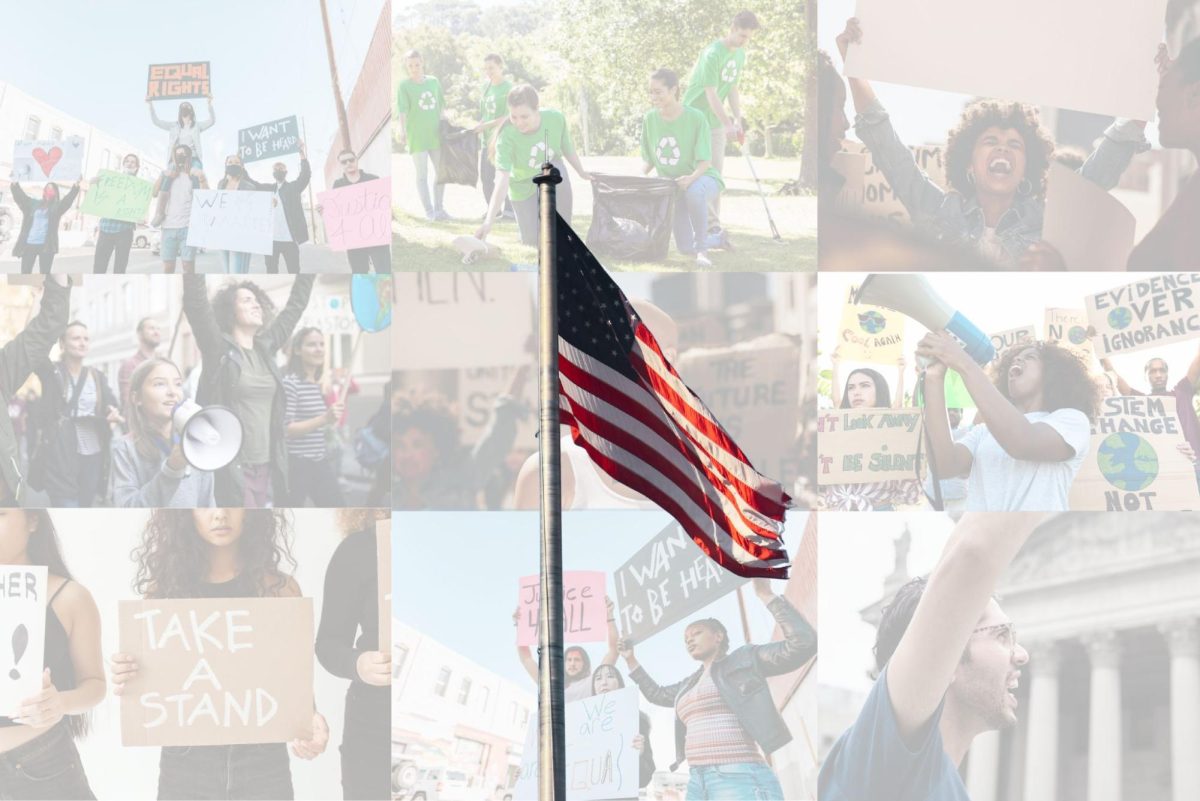






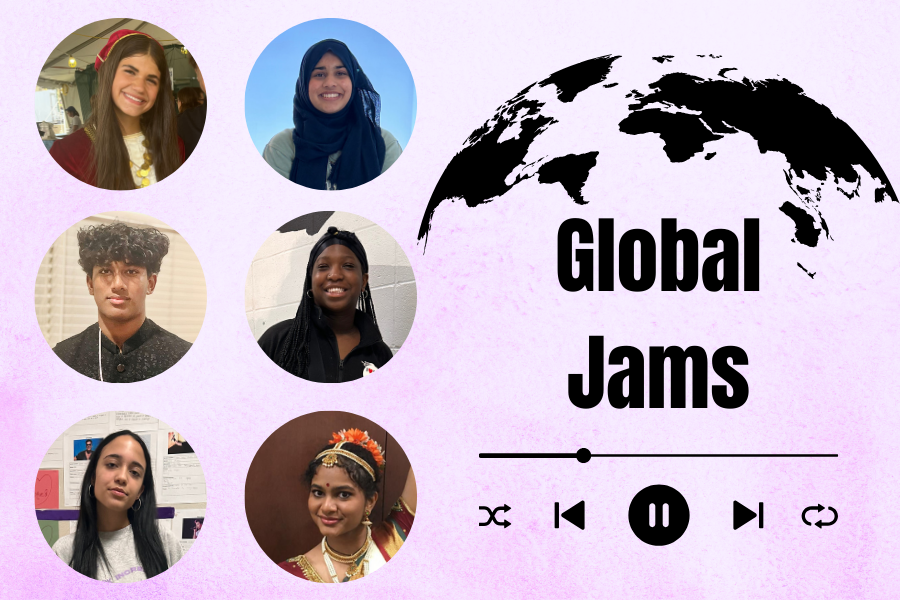
![Rested against a rainbow of colored pencils, a phone plays singer-songwriter Gracie Abrams’ single “Risk.” Abrams released the song as the lead single to her upcoming album “The Secret of Us.” “We had real, true fun writing this album. There were also the occasional tears. Audrey [Hobert] and I wrote ‘Risk’ on our couch at home,” Abrams wrote on Instagram.](https://pwestpathfinder.com/wp-content/uploads/2024/05/DSC_0009-2-1200x800.jpg)



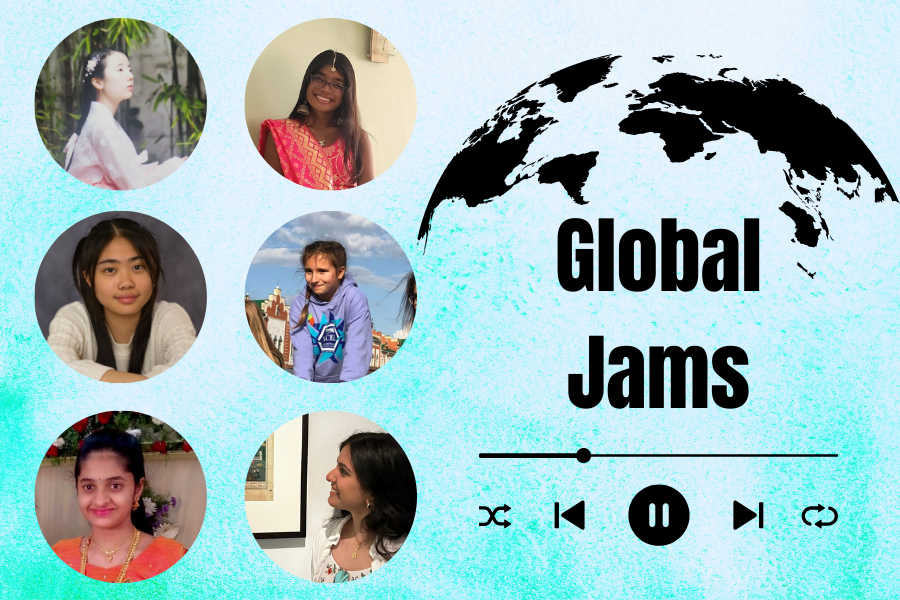

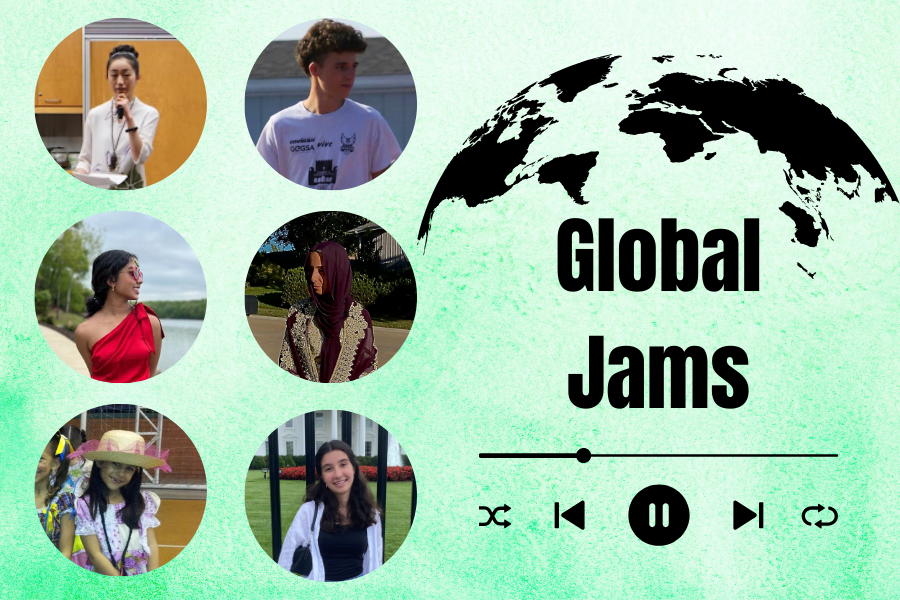

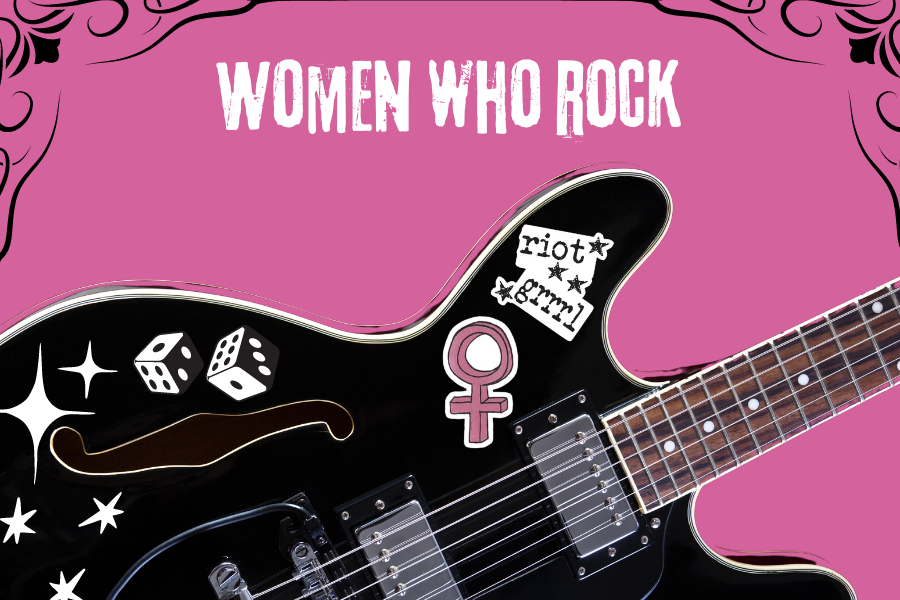


![2023 was defined by female vocalists such as Miley Cyrus, Taylor Swift and Paramore’s Hayley Williams as their diversity and talent amongst their respective genres topped the musical charts. Williams took to Instagram to show her gratitude for having owned the No. 1 spot on Billboard’s Top 100 chart. “We know enough by now to know success doesn’t equal value. That being said, to experience the [No. 1] on this album, as this version of Paramore, is such a sweet and surreal moment to celebrate together,” Williams wrote.](https://pwestpathfinder.com/wp-content/uploads/2023/12/2023-A-Musical-Recap-2.0-1.png)


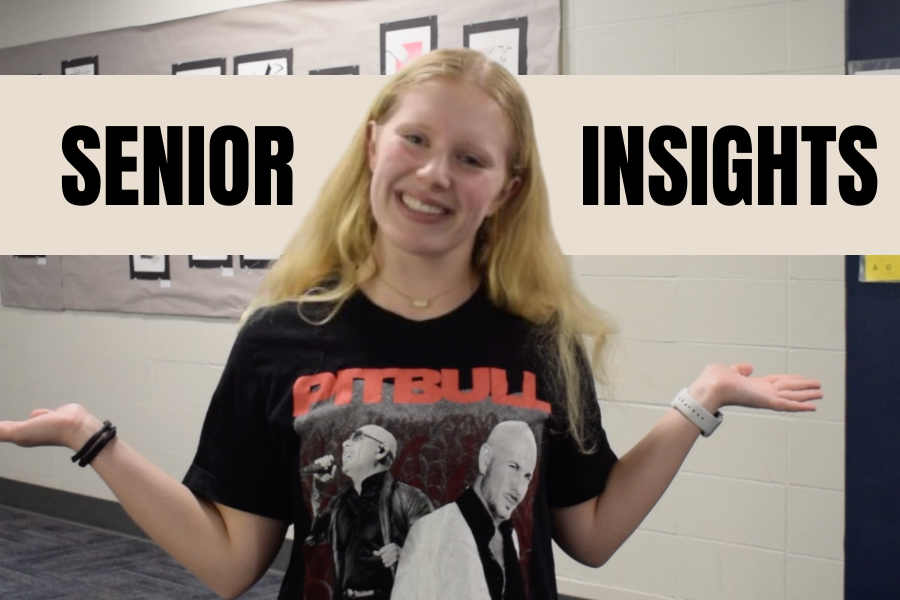


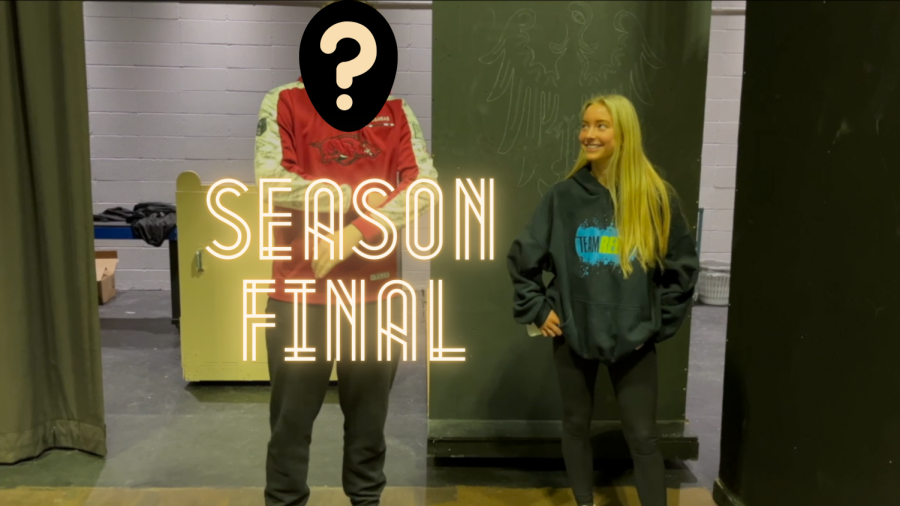



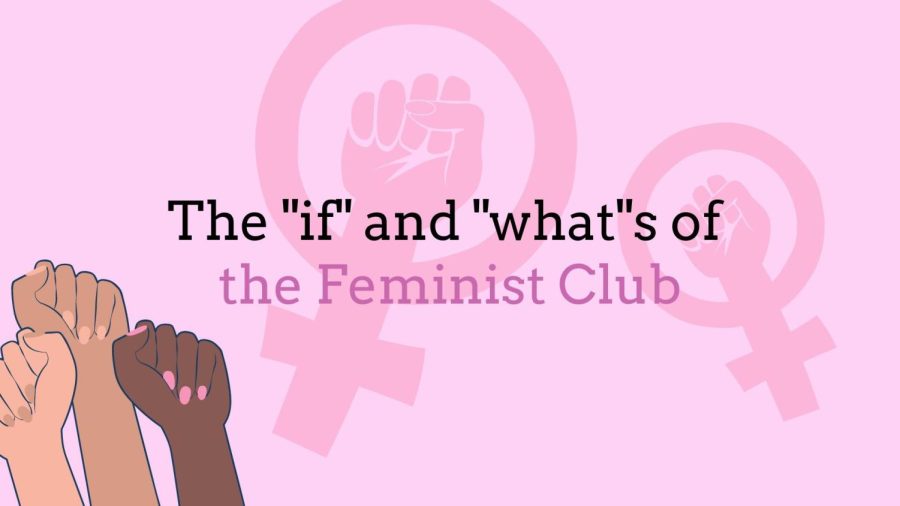
![In perfect shooting form and with eyes on the rim, junior Tyler Kuehl is about to shoot his next basket in the last game of the season against Marquette High School. Kuehl has been playing basketball since he was 5. “Even though I played basketball all my life, the game-winning shots can be pressure, its confidence. If youre going into that shot and not thinking that youre gonna make it, its obviously not going in. And if you believe, [it will]. Thats the only way you can succeed,” Kuehl said.](https://pwestpathfinder.com/wp-content/uploads/2024/01/unnamed-32-1-1200x1200.png)

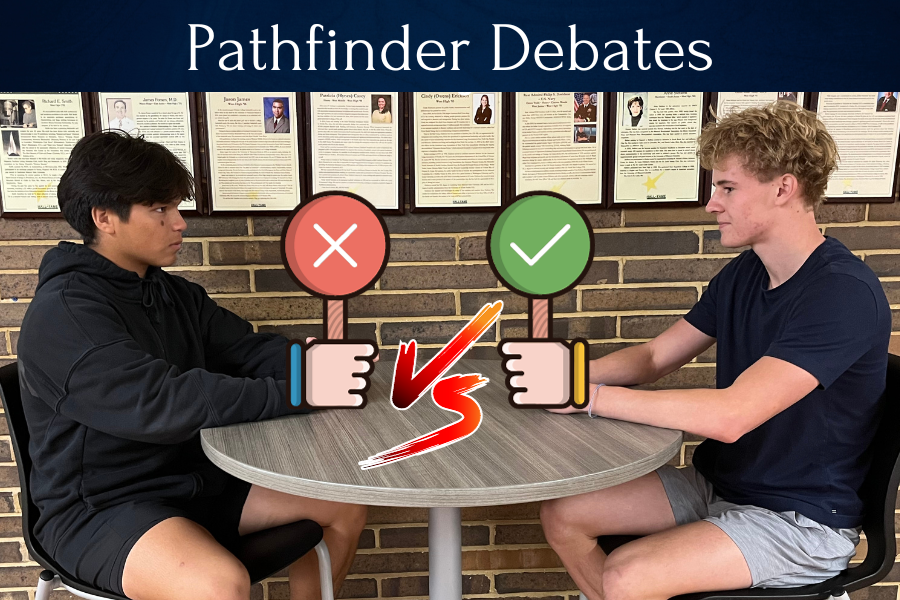


![“At the beginning of the year, I didnt really know a lot of [the] kids in my class [so] I tried to fit in [get to] know [them better]. Then, I started having a [friend] group I [now] stay with. [Now,] if I need to ask a question to understand the material better, Ill just ask. [Having more friends and being able to connect with people] makes me feel great. It makes me feel like Im not alone in [my] classes, and if anybody needs help, [we] always have [each other] to turn to. [I’m most proud of] meeting all the people throughout the years, growing and overcoming my injury. I feel like Im usually more kind to others and prefer their opinion over mine. I [am] always [open] trying what the group wants. When Im by myself, I [can] do something for [only] so long, but when Im with other people, I [can] do anything for as long as whoever Im with wants to. [As] I go through life, I want to make sure that everything I do is fun, [but] sometimes I cant help it because [I] need to have hard [moments in life;] moments being sad, mad or upset. Whatever you [choose to] do, always have fun and make sure it’s what you want.” - Ikhana Hildebolt, 9](https://pwestpathfinder.com/wp-content/uploads/2024/05/IkhanaHildebolt_9-1200x800.jpg)
![“Ive always been into [doodling] with pencils and ink. I used to watch YouTube drawing tutorials and [tried] to copy them. I had so much fun with that, but I felt like I was never [that] good [at art]; it made me lose motivation to draw. If I dont feel motivated to draw, I dont force myself to. I want drawing to be fun for me. I feel like every time I start again Im better than when I left. People can [create] art really fast but Ill sit there for hours and not be [finished] with the smallest [detail.] I learned to have patience [and] take my time. I used to try to get [fancy] materials. I was so stuck in the mindset that I needed [more supplies] to get better. I would get it and then feel discouraged because [my art quality] would be the same. Be patient with yourself. You dont need fancy materials to [make astounding] art. You can just use a wooden pencil and draw an amazing piece. I enjoy making beautiful [pieces] that have a message [behind it.] Its rewarding to see hours of work pay off as the final piece comes together.” - Morgan Summa, 10](https://pwestpathfinder.com/wp-content/uploads/2024/05/DSC_0034-1200x800.jpg)
![“I have been playing football for a long time and have enjoyed it. This year especially, I had so much fun. I was very happy when I made varsity because freshmen dont usually make the team [their first year of high school.] I love being around the guys [on the team] and I am going to miss the senior [mentors] next year. I will never forget the impact the seniors and Coach Duncan had on me. It was not only a team, it was a family. I felt like I belonged.” - Ethan Bain, 9](https://pwestpathfinder.com/wp-content/uploads/2024/05/IMG_7636-1200x800.jpeg)
![“This is my 10th year [teaching] at West. I started teaching because I struggled a lot in school, [but I decided to teach English because] I really like writing. I had a really hard time in high school and learning did not come easy to me in middle school. I would study for tests and still [did] not do well, or [I would] work really hard to write an essay and it just wouldnt come together. Once I got a grip on how to learn at the end of high school and in college, I really wanted to help students who were struggling to break down the learning process and make it easier because school is not easy for everyone. Math might not be your [specialty,] but maybe youre really good at theater, English or something else. So I’ve been helping students find what they are really good at, and [I have strived to] give them the confidence to continue.” - Diana Uffman, English](https://pwestpathfinder.com/wp-content/uploads/2024/05/DSC_0266-1200x800.jpg)
![“One thing that motivates me to write is being understood. A lot of my writing is about myself, my experiences, emotions and problems [that] I’ve had to deal with. Writing about it makes it easier for people to understand. [My work] might not [directly] say what the problem is in the story, but I love creating these fears, experiences and weird realities to reflect the issue. [A word I’d use to describe my writing is] probably ‘odd’. My writing style is [definitely] ‘out there’. I write a lot about death and forgetting people. [But] there’s also been a lot about just being alive, and [in the moment]. I struggle a lot with derealization, which is when nothing feels real to me. I write a lot about that, and it helps me feel more [grounded]. [Writing allows me to connect to others so] that people can relate to the characters in a story [which] helps them feel more comfortable with their own emotions. Every writer implements a piece of themselves, one way or another. Just putting [oneself] in a story [allows for both a deeper level of introspection and creativity]. ” – Onyx Coleman, 9](https://pwestpathfinder.com/wp-content/uploads/2024/05/pasted-image-0-1200x800.png)

![For the past three years, Parkway has administered high school finals after winter break, a practice that proves to be detrimental to the success as well as the mental health of students. With finals after break appearing to do more harm than good, the question of what changes can be made arises time and time again. “The pressure for finals is difficult, and to have that [pressure for] a few weeks because youre on [a] break can make you generally sad. Its a bummer in general. I wish [finals] were before break, so we [could] have a break to sleep, celebrate and not study. Everyone Ive talked to about it is like yeah, finals sucks, and I wish that wasnt a thing,” junior Meadow Kostial said.](https://pwestpathfinder.com/wp-content/uploads/2024/01/decembereditorial-1200x963.jpg)
![With her arms held high, junior Jenna Rickelman throws the ball across the pool during a girls water polo practice. With hours of practice after school and over the summer, Rickelman saw many improvements in her water polo skills. “When I look at [my] stats, Im so much better than I was last year,” Rickelman said.](https://pwestpathfinder.com/wp-content/uploads/2024/05/Untitled-design-2-.png)



![Celebrities are inescapable in our day-to-day lives, constantly reminding us of whatever is newest in their lives. And for us on the receiving end, we find ourselves devoting time and effort to vie for just the tiniest sliver of their attention. “[Taylor Swift] is my favorite celebrity, and to me she means someone who is kind, smart and caring,” junior Swati Kumar said. “I feel connected to her and her music; I listen to her everyday and I find [her] very relatable.”](https://pwestpathfinder.com/wp-content/uploads/2024/01/Parasocial-1.jpg)

![Marching in front of Forest Park Avenue, protesters gather in support of the pro-choice organization Planned Parenthood after the controversial overturning of the Supreme Court case Roe V. Wade. Parkway West alumna Luisa Larinizi, former co-president of the Feminist Club, attended the protest in 2022 to share her voice on the matter. “I went because it’s an issue I care about deeply and I felt this was a way I could help and actively be involved. It is very important to stand up for what we believe in, and peaceful protesting is always a great way to achieve that,” Lazarini said. “It was incredible to see how many people came. Many gave speeches on their personal experiences with reproductive rights, [giving] me new insight on how many people are actually affected by the issue.”](https://pwestpathfinder.com/wp-content/uploads/2024/01/Untitled-design-1.png)
Will Gonsior • Dec 4, 2023 at 9:57 am
They used the internet to inform about the internet. Great job!